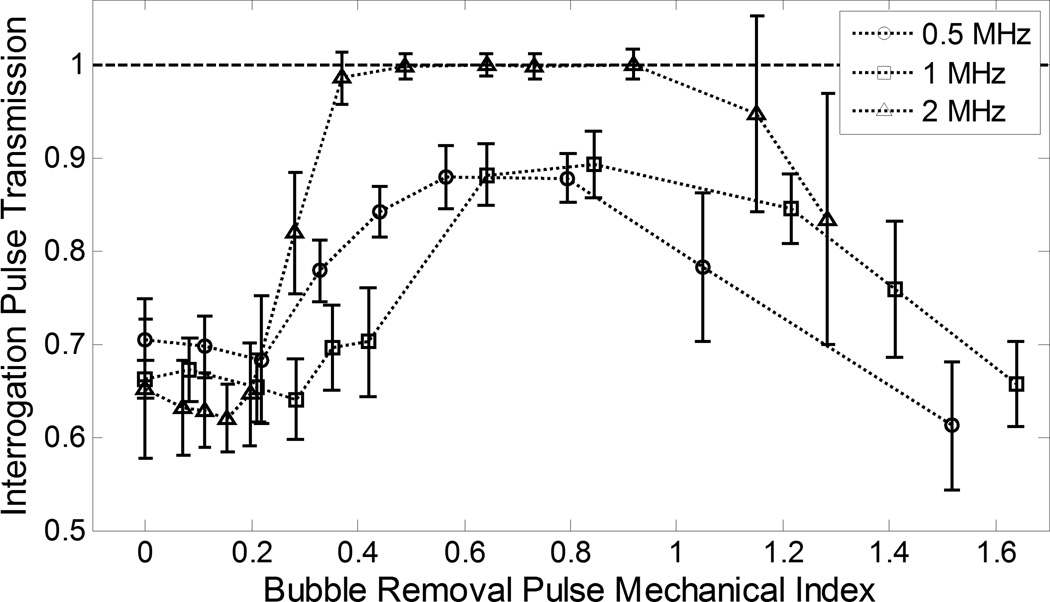Fig. 5.
Transmission of interrogation pulse peak-negative pressure (mean ± SD, n = 10). Data at all frequencies has been normalized to its corresponding baseline value (histotripsy pulse amplitude set to 0—i.e., no cavitation bubbles generated prior to interrogation). When evaluated as a function of MI, three distinct regimes of behavior are apparent across all frequencies tested (with provided cutoffs being approximate values): (1) MI < 0.2: Minimal bubble coalescence is observed and interrogation pulse transmission does not deviate significantly from its baseline value; (2) 0.2 < MI < 1: Bubble coalescence becomes more pronounced with increasing MI, and interrogation pulse transmission increases and trends toward a maximum; (3) MI > 1: Bubble coalescence is compromised as removal pulses incite violent cavitation and interrogation pulse transmission decreases.

